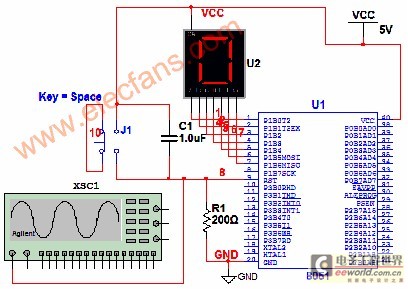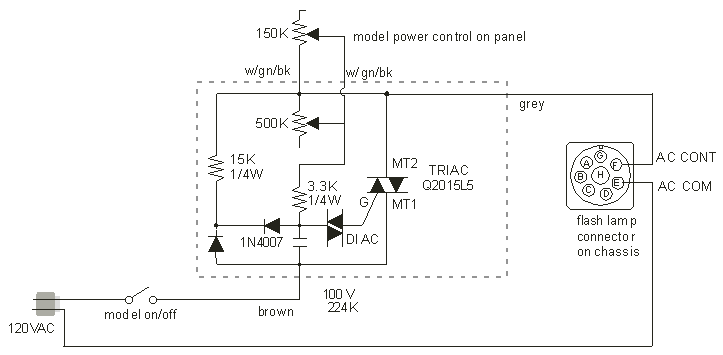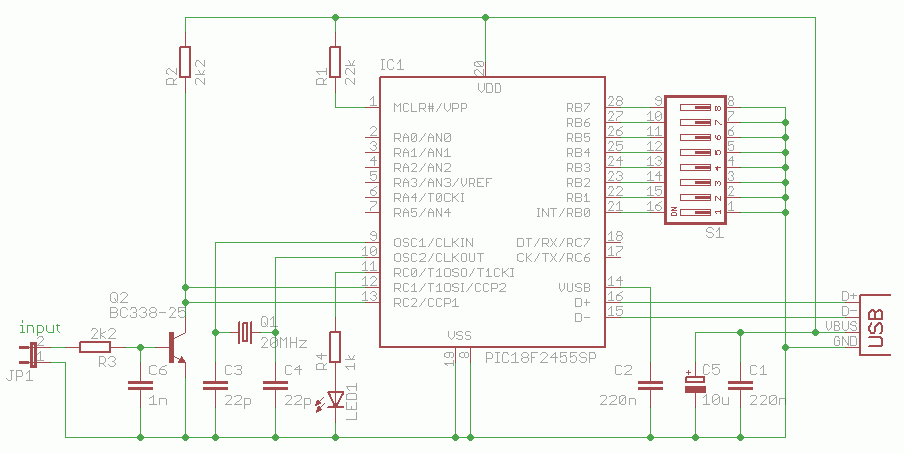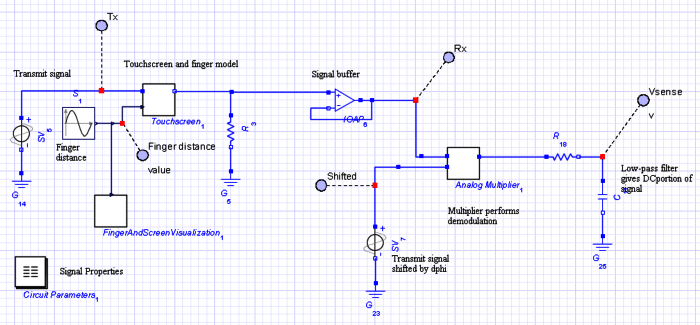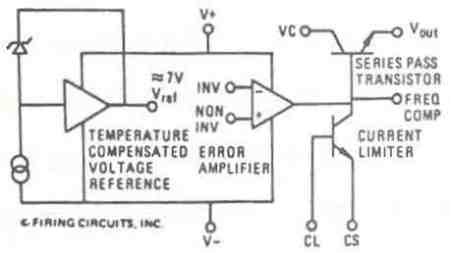
Model rocket launcher
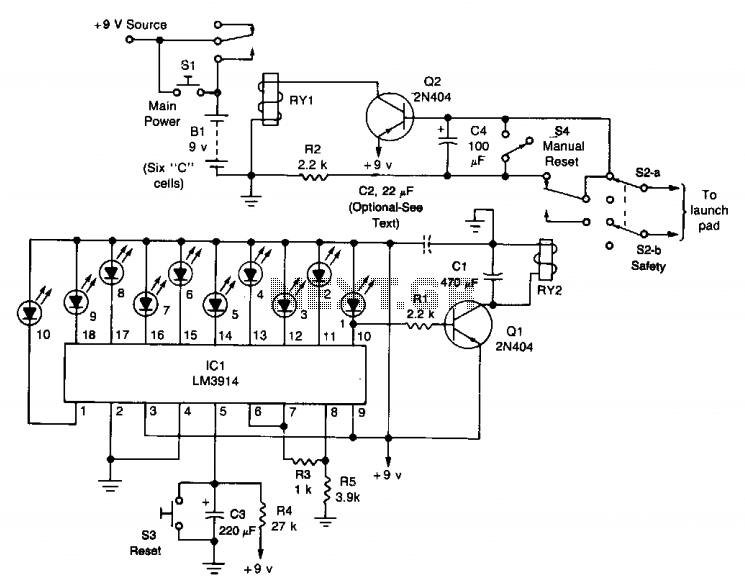
The circuit comprises a launch timer and an automatic-off timer. Upon applying power to the integrated circuit (IC), the countdown LED sequence activates until all LEDs are illuminated. When the last LED (LED1) is fully lit, transistor Q1 enters saturation, triggering relay RY2. This action completes the circuit between the lantern battery at the launch pad and the nickel-chromium wire, causing the wire to heat up and launch the rocket. Resistor R4 and capacitor C3 establish the countdown timing, which is approximately 10 seconds with the specified values. Resistors R3 and R5 regulate the brightness of the LEDs. Safety is a primary concern addressed in the second half of the circuit. When relay RY2 opens, current flow to transistor Q2 is interrupted. However, due to the presence of resistor R2 and capacitor C4, the transistor remains in saturation for about 3 seconds. Subsequently, the transistor ceases conduction, de-energizing relay RY1, which cuts off power to the rest of the circuit, leading to the de-energization of relay RY2 and breaking the circuit to the launch pad. Switch S3 is utilized to reset the countdown, while pressing switch S1 initiates the launch sequence, which then operates automatically. Switch S4 allows for manual latching of relay RY1 if necessary.
The circuit operates on a straightforward principle where the launch timer is initiated by a power supply connected to the integrated circuit. The countdown mechanism is visually indicated through a series of LEDs, which light up sequentially. The final LED activation triggers a transistor, which in turn activates a relay responsible for completing the circuit to the launch pad. The design incorporates resistors and capacitors to ensure precise timing and LED brightness, enhancing the user experience while maintaining safety protocols.
To ensure safety during operation, the automatic-off timer is critical. Once the launch sequence is complete and relay RY2 opens, the interruption of current to transistor Q2 is designed to prevent any accidental ignition of the rocket. The combination of resistor R2 and capacitor C4 provides a delay, allowing for a brief continuation of current flow before the system fully shuts down, ensuring that any residual energy is safely dissipated. The circuit's reset and launch initiation features are designed for ease of use, allowing the operator to reset the countdown or manually engage the relay as needed.
Overall, this circuit design effectively balances functionality, safety, and user interface, making it suitable for controlled rocket launches. The components are selected to provide reliable performance, and the schematic layout should reflect clear connections between each element, ensuring that the circuit can be replicated or modified as required.The circuit consists of the launch timer itself and an automatic-off timer. When power is applied to that IC, the countdown LED's sequence is on until they are all lit. When the last one LED1, is fully lit, transistor Ql saturates, energizing RY2. When that happens, a circuit between the lantern battery at the launch pad and the nickel-chromium wire is completed; the wire heats up as before, and the rocket is launched. Resistor R4 and capacitor C3 determine the countdown timing; with the values shown it should be approximately 10 seconds.
Resistors R3 and R5 set the LED brightness. Safety is of the utmost importance. That's the purpose of the second half of the circuit. When RY2 opens, the current flow to Q2 is disrupted. But, because of the presence of R2 and C4, the transistor remains saturated for about 3 seconds. After that, however, the transistor stops conducting and RY1 is de-energized. That cuts off the power to the rest of the circuit, and RY2 de-energizes again, breaking the circuit to the launch pad. Switch S3 is used to reset the countdown. Once that is done, pressing Si starts the launch sequence; the rest is automatic. Switch S4 is used to latch RY1 manually if needed.
The circuit operates on a straightforward principle where the launch timer is initiated by a power supply connected to the integrated circuit. The countdown mechanism is visually indicated through a series of LEDs, which light up sequentially. The final LED activation triggers a transistor, which in turn activates a relay responsible for completing the circuit to the launch pad. The design incorporates resistors and capacitors to ensure precise timing and LED brightness, enhancing the user experience while maintaining safety protocols.
To ensure safety during operation, the automatic-off timer is critical. Once the launch sequence is complete and relay RY2 opens, the interruption of current to transistor Q2 is designed to prevent any accidental ignition of the rocket. The combination of resistor R2 and capacitor C4 provides a delay, allowing for a brief continuation of current flow before the system fully shuts down, ensuring that any residual energy is safely dissipated. The circuit's reset and launch initiation features are designed for ease of use, allowing the operator to reset the countdown or manually engage the relay as needed.
Overall, this circuit design effectively balances functionality, safety, and user interface, making it suitable for controlled rocket launches. The components are selected to provide reliable performance, and the schematic layout should reflect clear connections between each element, ensuring that the circuit can be replicated or modified as required.The circuit consists of the launch timer itself and an automatic-off timer. When power is applied to that IC, the countdown LED's sequence is on until they are all lit. When the last one LED1, is fully lit, transistor Ql saturates, energizing RY2. When that happens, a circuit between the lantern battery at the launch pad and the nickel-chromium wire is completed; the wire heats up as before, and the rocket is launched. Resistor R4 and capacitor C3 determine the countdown timing; with the values shown it should be approximately 10 seconds.
Resistors R3 and R5 set the LED brightness. Safety is of the utmost importance. That's the purpose of the second half of the circuit. When RY2 opens, the current flow to Q2 is disrupted. But, because of the presence of R2 and C4, the transistor remains saturated for about 3 seconds. After that, however, the transistor stops conducting and RY1 is de-energized. That cuts off the power to the rest of the circuit, and RY2 de-energizes again, breaking the circuit to the launch pad. Switch S3 is used to reset the countdown. Once that is done, pressing Si starts the launch sequence; the rest is automatic. Switch S4 is used to latch RY1 manually if needed.
